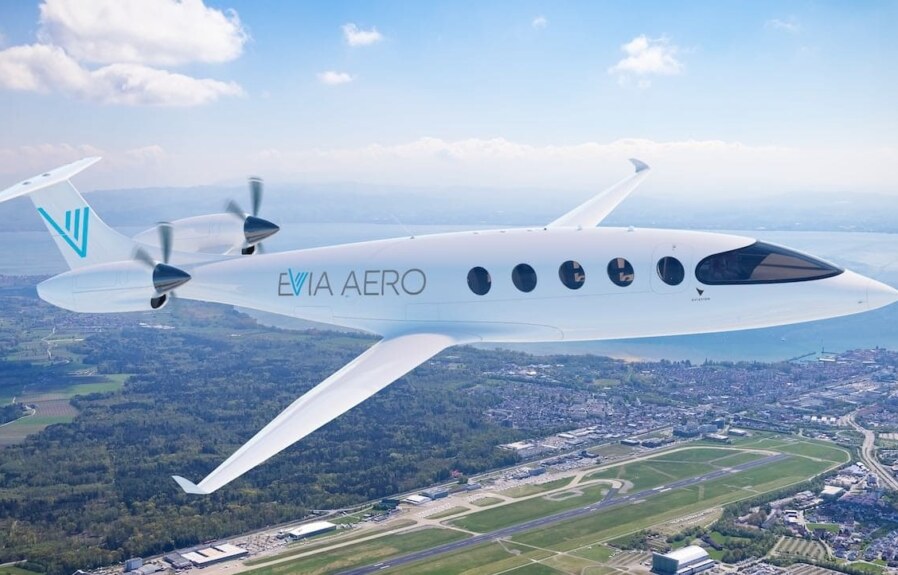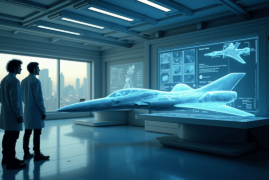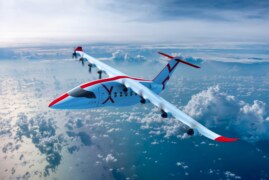The aerospace industry has always been a hub of innovation, constantly pushing the boundaries of what’s possible in terms of aircraft design, efficiency, and safety. As we look to the future, emerging technologies and groundbreaking concepts are set to redefine the way we think about air travel, space exploration, and global connectivity. Here’s a look at some of the most exciting innovations reshaping the aerospace industry:
1. Electric and Hybrid Aircraft for a Greener Future
With sustainability at the forefront of global concerns, the aerospace industry is exploring the potential of electric and hybrid aircraft to reduce emissions and reliance on fossil fuels. These technologies are not only expected to reduce carbon footprints but also offer quieter, more efficient air travel options.
Example: The Alice, an all-electric aircraft developed by Eviation Aircraft, promises zero emissions for short regional flights, offering a cleaner alternative for commercial aviation.
2. Urban Air Mobility (UAM) – Air Taxis and Beyond
Urban Air Mobility (UAM) is transforming city transportation, offering innovative solutions to congested urban areas. Electric air taxis and autonomous flying vehicles are being developed to revolutionize how people travel within cities, potentially reducing traffic congestion and offering faster, more efficient alternatives.
Example: Joby Aviation’s electric air taxi, capable of carrying passengers in urban environments, is aiming for certification in the coming years, opening the door to a new era of on-demand air travel.
3. Supersonic and Hypersonic Flight
After the Concorde, supersonic flight faded from commercial aviation, but now it’s making a comeback. The development of new supersonic aircraft aims to significantly reduce travel times, and research into hypersonic flight could take us even further, enabling travel speeds above Mach 5.
Example: Boom Supersonic’s Overture will be able to fly at Mach 2.2, cutting the time of a transatlantic flight from seven hours to just three and a half, while using sustainable aviation fuel to maintain eco-friendly practices.
4. Autonomous Flight and Pilotless Aircraft
The development of autonomous flight technology is one of the most exciting and potentially transformative trends in aerospace. With the ability to reduce human error and optimize flight operations, pilotless aircraft could become a reality in the coming years, especially in cargo transport and smaller commuter flights.
Example: Elroy Air is developing autonomous cargo aircraft capable of delivering goods without the need for a pilot, promising a more efficient and cost-effective logistics network.
5. Smart Aircraft with IoT Integration
The integration of Internet of Things (IoT) technology into aircraft systems will allow for smarter, more connected planes. IoT sensors can monitor everything from engine performance to cabin conditions, improving maintenance, reducing downtime, and enhancing passenger comfort.
Example: Delta Airlines is already testing smart aircraft technology, using IoT sensors to gather real-time data that helps improve aircraft performance and predict maintenance needs before they become critical.
6. Space Tourism – Making Space Accessible
Space tourism is no longer just a futuristic concept. Companies like SpaceX, Virgin Galactic, and Blue Origin are developing spacecraft that can carry civilians into space for brief suborbital flights. As these technologies progress, space tourism could become more mainstream, offering an entirely new way to experience the universe.
Example: Virgin Galactic’s SpaceShipTwo successfully completed crewed spaceflights, carrying Richard Branson and others into space for a few minutes of weightlessness, marking a significant milestone in the commercial space travel industry.
7. Advanced Air Traffic Management
As air traffic continues to increase, advanced air traffic management systems are essential to ensuring safe, efficient, and smooth operations. Using artificial intelligence, machine learning, and real-time data, these systems can optimize flight paths, reduce congestion, and improve safety.
Example: The FAA’s NextGen system, currently being rolled out in the U.S., uses satellite-based navigation and data sharing to streamline air traffic control, cutting down on delays and reducing environmental impact.
8. 3D-Printed Aircraft Parts
3D printing technology is transforming aircraft manufacturing, allowing for the production of lightweight, customized, and highly complex parts. This innovation has the potential to significantly reduce production costs and lead times while improving the overall performance of aircraft.
Example: Boeing has already begun using 3D printing to produce parts for its 787 Dreamliner, and they’re also exploring the technology for future models, enabling more flexible and cost-effective production processes.
9. Blockchain for Aerospace Supply Chain Management
Blockchain technology is being explored as a way to enhance the security and efficiency of the aerospace supply chain. By providing an immutable and transparent ledger, blockchain can help track parts, monitor quality control, and prevent fraud in the supply chain.
Example: IBM’s blockchain solutions are already being tested in aerospace logistics, ensuring parts are traceable from the supplier to the final assembly, improving accountability and reducing errors in aircraft production.
10. Advanced Hypersonic Missiles and Space Defense Systems
The defense sector is also pushing the envelope in aerospace with the development of hypersonic missiles capable of traveling at speeds faster than Mach 5. Additionally, space defense systems are being built to protect satellites and other space infrastructure from potential threats.
Example: The U.S. Department of Defense is working on hypersonic missile technologies that could reach targets anywhere in the world in less than an hour, fundamentally changing military strategy.
Conclusion
The aerospace industry is entering an exciting new era marked by technological advancements and new concepts that promise to transform air travel, space exploration, and beyond. Whether it’s electric aircraft, autonomous flight, or space tourism, the next decade will be filled with innovations that will revolutionize how we travel, work, and connect. As these technologies mature, we can look forward to a future where aerospace capabilities are more advanced, more sustainable, and more accessible than ever before.
Which emerging aerospace technology are you most excited about? Share your thoughts in the comments below!




Leave a comment